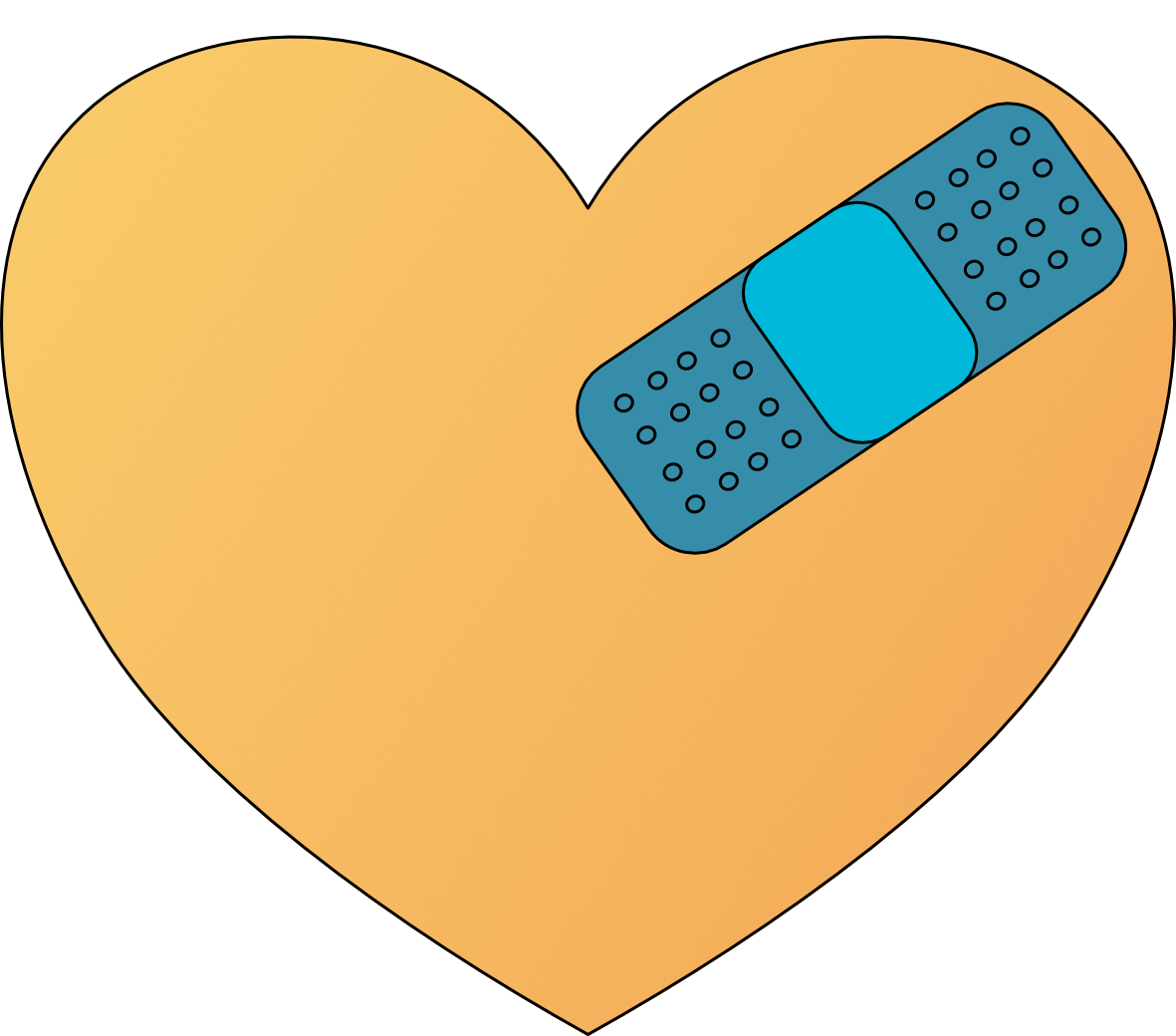traumaMyths
Trauma Myths is available to download
Trauma Myths
From action heroes to supervillains, the entertainment industry has painted an often skewed picture of trauma. Pop culture has added to this wave of misinformation helping half-truths and assumptions surf across social media platforms unchecked.
Incorrect beliefs can lead to stigma, and as with other mental health issues, stigma and shame can reduce the likelihood that someone will seek out professional support. We offer this brief look at the facts to help you better understand this issue and together stamp out the stigma of mental illness.
Myth 1 - Psychological trauma is not a real thing
Fact
What we refer to as “Psychological Trauma” is our brain’s response to experiencing or witnessing a very distressing event. The brain’s number one job is to keep us alive so it can travel around in luxury, safely tucked away in our head (skull). When we go through something that is so scary, so frightening that we fear for our physical and/or emotional safety, the brain reacts by going on high-alert.*
For some, that high-alert status fades over time with the brain going back to business as usual. For many others, the brain is not quite convinced that the danger has passed and it starts to acts a bit paranoid. Neurological changes occur in the physical structure of the brain and it can negatively impact our cognitive (thinking) abilities, and our behavior. Long-term issues include physical, mental, and emotional distress that interferes with every aspect of life.
Myth 2 - Only wartime Veterans experience psychological trauma
Fact
It was originally named “shell shock” after a psychologist noted severe reactions to war-related experiences during WWI. Nearly a hundred years later, and after a lot of research, we now understand that anyone at any age can experience a traumatic event. These events can include natural disasters, witnessing death or abuse, personally experiencing physical or emotional abuse, or a vehicle accident.
Myth 3 - You’ll grow out of it.
Fact
Humans don’t usually outgrow memories or experiences. Most adults can recall memories from around age 5 and older, like a fun birthday party, a favorite teacher or coach, or even the name of someone who was their third grade bully. Yes, rarely (less than 2.6%) a traumatic response results in dissociative amnesia, but a traumatic event doesn’t simply fade from our lives as we age - unfortunately.
Myth 5 - After experiencing trauma, humans change drastically and become violent or evil like the Joker, or Hannibal Lecter.
Fact
Responding to the world post-trauma can be very different compared to before pre-trauma behaviors. Anxiety, inability to sleep, nightmares, avoiding people and places associated with the trauma, and always being “on edge” are just a few things that may seem different.
However, experiencing a distressing event does not automatically translate to lashing out at others, or becoming abusive.
Myth 6 - Only very specific types of events are traumatic.
Fact
The human who experienced the event determines if it was traumatic or not - no one else. What can be no big deal to one person may feel life-threatening to another.
Overall, the event is not the most important factor - it is the brain’s response to the event that is the main focus.
Myth 7** - There is no treatment for treating trauma or Post-traumatic Stress Disorder (PTSD)
Fact
Although there is no “cure,” (because we cannot undo an experience) there are many different treatments that may reduce the psychological response to trauma, which can improve their quality of life. Learning ways to effectively manage the intense emotional and behavioral responses, reducing the anxious feelings, and improving sleep are just a few ways therapy can be helpful.
**Mental Health and Medical professionals use various approaches to treatment, or a combination of methods, depending upon the individual’s needs - as not everyone has the same symptoms or responds in the same way to treatment.
Some approaches with the strongest evidence include Cognitive Processing Therapy, Narrative Exposure Therapy, Cognitive Behavioral Therapy (CBT), Eye Movement Desensitization and Reprocessing (EMDR), Transcranial Magnetic Stimulation (TMS), Prolonged Exposure (PE), and medication therapy.
Before starting treatment for trauma please ensure that the professional you are working with is appropriately educated, trained, and licensed.
Myth - 8 It is best to talk about the trauma to get it out.
Fact
Individuals struggling with the after effects of trauma often avoid discussing details of their experience, or even avoid acknowledging it happened. Allow them to go at their own pace, in their own time.
Distressing events can make us feel vulnerable, unable to control a scary world, or even protect ourselves. Forcing someone to share their experiences before they are ready may reinforce the feelings of vulnerability.
Offer support, respect their needs, and listen with empathy when they’re ready to tell their story.
Myth - 9 Everyone exposed to trauma gets PTSD
Fact
Less than 1/3 of people who have experienced a traumatic event develop PTSD, with women usually twice as likely compared to men. It has been estimated that approximately 8% of the US population have experienced PTSD, which is way lower than the number of individuals who have faced trauma.
Myth - 10 When someone says they are “triggered,” it is just an act.
Fact
Being reminded of the traumatic episode, or being “triggered,” through things like photos or conversations may force the individual to re-experience the event through flashbacks or it can intensify feelings of anxiety or fear.
This is not to be confused with Exposure Therapy, which is conducted by trained professionals in collaboration with the client, and possibly their primary medical providers.
References
Corrigan, P. W., Morris, S. B., Michaels, P. J., Rafacz, J. D., & Rüsch, N. (2012). Challenging the Public Stigma of Mental Illness: A Meta-Analysis of Outcome Studies. Psychiatric Services, 63(10), 963-973. doi:10.1176/appi.ps.201100529
McNally, R. J., PhD. (2007). Dispelling Confusion About Traumatic Dissociative Amnesia. Retrieved August 12, 2020, from https://www.mayoclinicproceedings.org/article/S0025-6196(11)61370-0/fulltext
Parcesepe, A. M., & Cabassa, L. J. (2012). Public Stigma of Mental Illness in the United States: A Systematic Literature Review. Administration and Policy in Mental Health and Mental Health Services Research, 40(5), 384-399. doi:10.1007/s10488-012-0430-z
Penn Psychiatry. (n.d.). Retrieved August 12, 2020, from https://www.med.upenn.edu/traumaresponse/trauma.html
VA.gov: Veterans Affairs. (2014, April 04). Retrieved August 12, 2020, from https://www.ptsd.va.gov/professional/treat/cooccurring/research_violence.asp
VA.gov: Veterans Affairs. (2018, September 13). Retrieved August 12, 2020, from https://www.ptsd.va.gov/understand/common/common_adults.asp
OUR RECENT ARTICLES
________________________________________________________________________________________
The information and resources on this website are intended to help individuals better understand the U.S. health care system, health services research and medical effectiveness, and diagnosed conditions, but not to provide specific medical or mental health advice. Individuals are urged to consult with their own qualified health care providers for all diagnosis and treatment, and for answers to personal health care questions.
Please see our Terms of Use for details.
© 2023 Strive Family Resources, LLC




